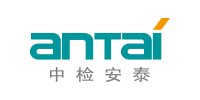|
Classification of in vitro diagnostic reagents 体外诊断试剂的分类时间:2016-04-14
In vitro diagnostic reagent products can be roughly divided into clinical chemistry, hematology, microbiology, immunology and other types. Of these, clinical chemistry accounted for the largest market share, close to 40%; followed by the immunology market, accounting for about 35%. Immunodiagnostic reagents use qualitative and quantitative diagnostics that combine the specific reactions of antigens and antibodies to each other. Regardless of technology or market, these reagents are the fastest among all diagnostic reagent products. According to the diagnostic category, it can be divided into infectious diseases, endocrine, tumor, drug detection, immunology, blood group identification. It is estimated that future immunodiagnostic reagents will gradually replace clinical chemical reagents and become the mainstream of diagnostic reagents. With the change of external factors, in addition to diversification of diagnostic reagents, it will also develop toward home-based diagnostic reagents and diagnostic automation that are highly specific, sensitive, inexpensive, and simple to use. Diagnostic reagents can be used in blood banks, hospitals and testing centers, homes, clinics and other departments. Due to the different purposes of use, the diagnostic reagents have different product forms. Diagnostic reagents are mainly used in hospitals and testing centers, followed by families. Household diagnostics are easy to use, convenient and fast, and are suitable for use by untrained personnel. The diagnostic reagents for pregnancy, ovulation, blood glucose, and urine used by general families are all such reagents. The proportion of such reagents in the overall market is not high, accounting for only about 9%. However, as people's pace of life accelerates, people pay more attention to efficiency, and thus such reagents are increasing every year. Although current diagnostic reagents account for only 25% of the biotechnology industry, they have a great impact on current medical diagnostics. As genetic engineering, genetic recombination, and monoclonal antibodies continue to be used in the development of diagnostic reagents, in addition to increasing the sensitivity and specificity of reagents, infectious diseases, tumors, or genetic abnormalities that were not possible or time-consuming in the past have also been made available. Diagnosis becomes possible or rapid diagnosis. In addition, the combination with automated analytical instruments or electronic technology makes these precise diagnoses not only enter the clinical routine diagnosis stage but also shorten the time between medical treatment and diagnosis. |





